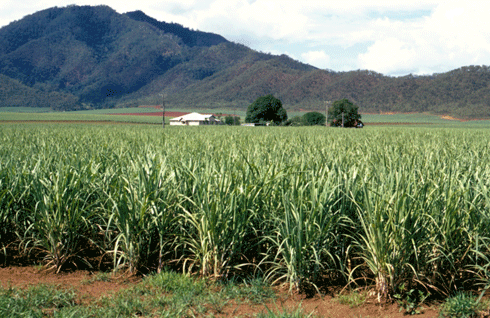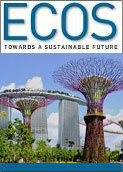
|
Published: 25 March 2013
Sweet news for cane growers: medical test could reduce fertiliser runoff
An Australian PhD scholar is applying human medical techniques to soil in a project likely to save sugar producers money and help protect the Great Barrier Reef.
The University of Queensland’s Richard Brackin is using a new technology for non-invasive micro-scale soil sampling that promises to change how cane growers fertilise their crops. It is likely to lead to significant reductions in fertiliser use without reducing crop quality or yield, and would lead to reduced nitrogen run-off to the Great Barrier Reef.
‘Micro-dialysis is an established medical and neurological technique, but has only recently been applied to soil,’ he said.
‘It has the potential to improve understanding of nutrient availability at the soil-root interface, as micro-dialysis is able to measure “flux rates”, or uptake of nutrients by plant roots.’
Richard recently won a Young Science and Innovation Award from the Sugar Research and Development Corporation. The award judges said Richard's work would deliver economic, environmental and social benefits for the sugarcane industry, and had positive implications for climate change, the environment (especially the Great Barrier Reef) and grower production costs.
Current soil-sampling methods provided only a snapshot of nutrient levels at a particular time, based on the manual extraction of soils, according to Richard.
‘Micro-dialysis monitors changes in nitrogen fertiliser after it has been applied to soil, by providing high-resolution real-time measurements of nitrogen fluxes and turnover at a micro-scale.
‘Positioning micro-dialysis membranes in close proximity to sugarcane roots will allow more detailed analysis of the rapid nitrogen transformations that occur after fertiliser application in sugarcane soil, can measure the preferential uptake of particular forms of nitrogen by roots.
‘This technique is highly innovative and generates data that cannot be produced using current soil techniques.’
Sugarcane is one of the least efficient crops in terms of nutrient uptake, and scientists estimate that sugarcane crops acquire only about 50 per cent of applied nitrogen fertiliser. Fertiliser is largely applied as a single application of urea, but soil microbes rapidly transform this into different nitrogen forms.
‘The resulting rapid fluxes of each nitrogen pool make quantification difficult using traditional methods, and this knowledge gap contributes to difficulty matching nitrogen supply to plant demand,’ Richard said.
‘As a result, fertiliser inputs generally exceed crop use, which means the grower is wasting money, and run-off could damage the environment.
‘The outcome of my research will assist grower decision-making about what fertiliser types to use, application rates and timing.’
Source: UQ




